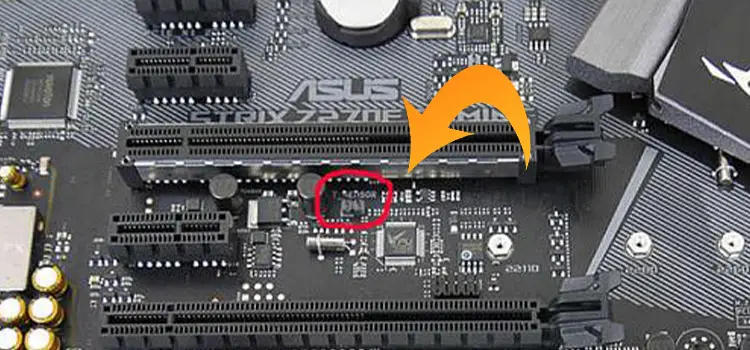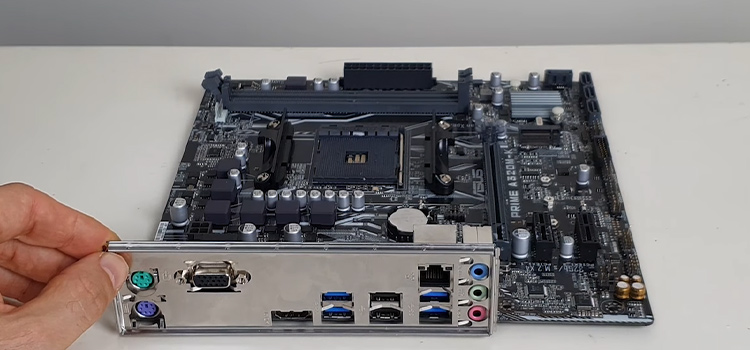2 Pin T Sensor Asus | How Is T Sensor?
The Asus 2 pin sensor is a temperature and humidity sensor for a variety of environmental monitoring applications. The sensor is convenient to use for short- or long-term monitoring projects due to its compact and lightweight design. It also comes with a built-in battery that can run for up to two years, making it ideal for usage in remote or difficult-to-reach areas.

The Asus 2-pin sensor is a compact, low-cost, and simple-to-use sensor for measuring a range of environmental variables. It includes two Arduino pins and uses a digital I/O pin to interface with an Arduino or other microcontroller. In this article, we’ll try to provide you with an overview of the Asus 2-pin T sensor.
What Is a Temperature Sensor?
A sensor is an electronic device that detects and responds to environmental stimuli. Temperature, light, heat, motion, moisture, pressure, or any of a variety of other natural phenomena could be used as the individual input. At the sensor position, the output is usually a signal that is translated into a human-readable display. When it comes to temperature sensing, the best current sensor technology aims to provide accurate and precise temperature measurements while being energy-efficient, durable, and cost-effective.
Types of Temperature Sensors
Temperature sensing requirements may vary by application. The type of measurement and the location of the measurement being monitored are all things to consider.
The four most prevalent types of temperature sensors used in modern electronics are as follows:
- Thermocouples
- RTDs (resistance temperature detectors)
- Thermistors,
- Semiconductor-based integrated circuits (IC).
1. Thermocouples
The most common type of T sensor is the thermocouple. They’re used in a variety of industries, including manufacturing, automotive, and consumer goods. Thermocouples are self-powered, do not require excitation, and have fast response times. They can function across a wide temperature range.
2. RTD (Resistance Temperature Detector)
Any metal’s resistance changes as the temperature changes. RTD temperature sensors rely on this resistance difference. A resistor with well-defined resistance vs. temperature properties is known as an RTD. The most popular and accurate material used to create RTDs is platinum.
3. Thermistors
Temperature variations induce quantifiable resistance changes in thermocouples, which are similar to RTDs. Thermistors are usually made of polymer or ceramic. Thermistors are often less expensive than RTDs, but they are also less precise. The majority of thermistors come in two wire layouts.
4. Semiconductor Based ICs
Local temperature sensors and remote digital temperature sensors are two types of semiconductor-based temperature sensor ICs. Local temperature sensors are integrated circuits (ICs) that use the physical properties of transistors to determine the temperature of their own die. The temperature of an external transistor is monitored by remote digital temperature sensors.
Applications of T sensor
The following are some of the uses for a T sensor:
- T sensors are used to validate design assumptions, resulting in a more secure and construction.
- They’re used to track the temperature rise as concrete cures.
- Near liquid gas storage tanks and ground freezing operations, they can measure rock temperatures.
- Water temperatures in reservoirs and boreholes can also be measured using it.
- Temperature-related stress and volume variations in dams can be interpreted using this method.
- They can also be used to see how temperature affects other installed equipment.
Functions of Temperature Sensors
A T sensor is a gadget that measures how hot or cold something is. The voltage across the diode is what allows a temperature meter to function. The resistance of the diode determines the temperature change. The resistance will decrease when the temperature drops, and vice versa.
The resistance across the diode is measured and translated into readable temperature units (Fahrenheit, Celsius, Centigrade, etc.). T sensors are used to measure the inner temperature of structures such as bridges, dams, power plants, and so on.
Budget of 2 Pin T Sensor Asus
Because the price of a 2 pin t sensor ASUS might vary depending on a lot of factors, there is no single answer to this topic. However, this sort of sensor is generally inexpensive, costing as low as £10.00. The brand, the sensor’s unique features, and the provider are all factors that could affect the price. To receive the best value, it’s crucial to perform some research before making a purchase.
Frequently Asked Questions
What Is the T Sensor?
The T sensor on the motherboard refers to the Temperature sensor. It simply measures the temperature in different parts of the case to fine-tune the speed of the Fans.
Where Do You Plug a Temperature Sensor on A Motherboard?
You can plug a temperature sensor easily into your motherboard. You’ll need to plug the 2-pin cable into the header on your motherboard. The headers are normally situated near the bottom of the motherboard.
What Is the Range of T Type Sensor?
Different types of T-type sensors have different temperature ranges. For example, T sensor with copper legs has a maximum temperature of 307°C or 700°F. On the other hand, K type sensor can handle up to 1260°C or 2300°F.
Last Words
When purchasing a 2 pin t sensor Asus, there are several variables to consider. Pricing is one of the most crucial factors. You’re looking for a sensor that’s both inexpensive and high-quality. You must also ensure that the sensor is compatible with your motherboard and capable of providing the information you desire.
Subscribe to our newsletter
& plug into
the world of PC Hardwares


![[5 Fixes] Error Crash Report Database Win CC469 Failed to Stat Report](https://www.hardwarecentric.com/wp-content/uploads/2023/03/Error-Crash-Report-Database-Win-CC469-Failed.webp)
![[Fix] 162 System Options Not Set (100% Working)](https://www.hardwarecentric.com/wp-content/uploads/2021/11/162-system-options-not-set.jpg)


